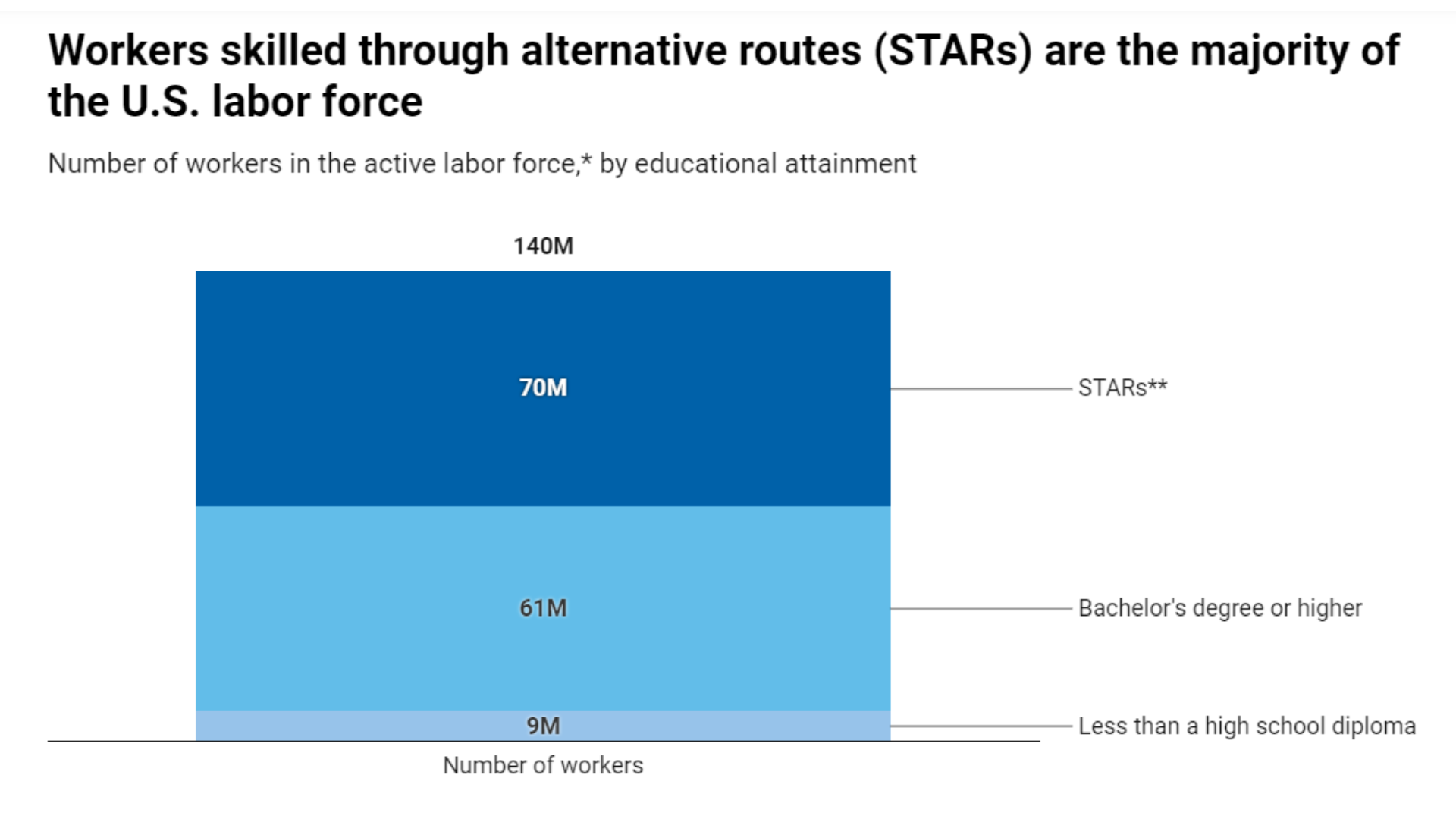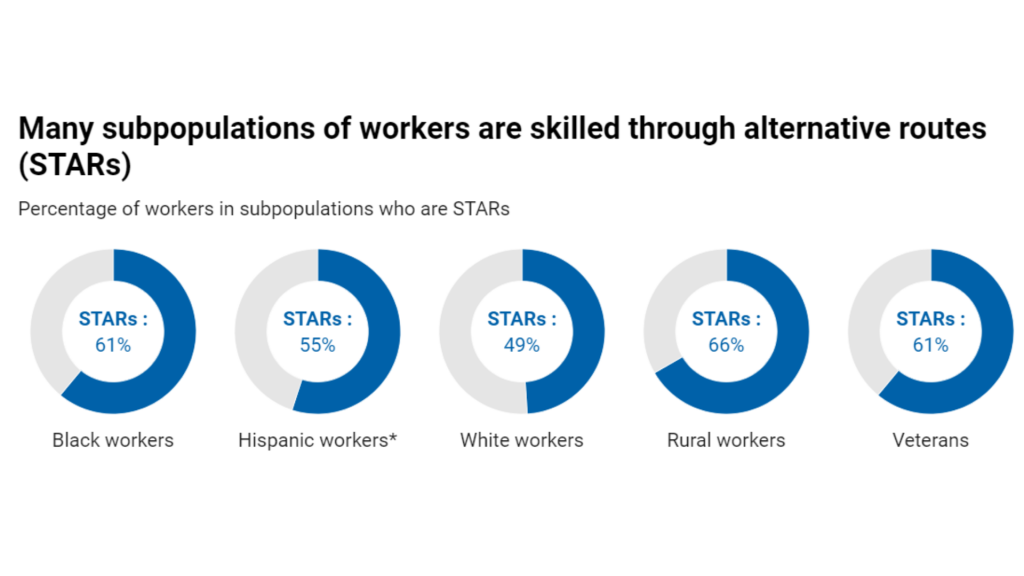The need for skilled trade workers continues to be in critical demand and industries across the globe are scrambling to find ways to quickly and effectively fill these jobs. The welding industry is no stranger to these challenges. According to the American Welding Society, 360,000 welders are projected to be needed by 2027 with 90,000 needed annually (aws.org).
 How do we continue progress in this country without the skilled tradespeople to do the job? It is ever more imperative that industry leaders and business owners need to work collaboratively with education institutions to ensure the training learners receive is in step with what the industry needs. While there are many paths to filling these jobs, from providing on-the-job training, upskilling current workers or adding automation to the production line, communication between Education facilities and industry must be ongoing to respond to constantly changing needs.
How do we continue progress in this country without the skilled tradespeople to do the job? It is ever more imperative that industry leaders and business owners need to work collaboratively with education institutions to ensure the training learners receive is in step with what the industry needs. While there are many paths to filling these jobs, from providing on-the-job training, upskilling current workers or adding automation to the production line, communication between Education facilities and industry must be ongoing to respond to constantly changing needs.
But where to start? How do we bring industry leaders and educators together to work collaboratively to develop a comprehensive training program and get the right skilled workers out into the workforce?
Since 1917, Lincoln Electric has been instrumental in the development of welding education and training. Over the years our team has grown with the same mission to advance education, training and awareness of the need for skilled welders. With our strong industry partner relationships and a team of education curriculum and training professionals, we developed the Lincoln Electric Education Partner Schools (LEEPS) welding program with the emphasis to build the bridge between industry and educators as well as create meaningful curriculum that will support the continuously changing workforce needs.
When state Career Technical Education (CTE) leaders include the LEEPS certification program on their industry-recognized credentials list (IRC) for secondary, post-secondary and/or workforce development lists, it allows the schools in that state to receive funding for every learner who earns an IRC certification. In Ohio, 20 organizations have LEEPS certifications on their IRC list. One school, Utica Shale Academy has certified 234 students in 2022 alone, which has helped offset expenses for the year.
In partnership with the National Coalition of Certification Centers (NC3), the LEEPS welding certification program provides curriculum and learning management resources for learners and welders to earn standard-based certifications. These certifications are portable and stackable, which means welders can build their own skill base for specific job requirements by combining the skills and certifications they need for immediate employment. The LEEPS program creates standardization with the Train-the-Trainer program. All instructors receive the same training, tests, grading rubrics, and curriculum materials to earn certification in a welding class or process. Instructors then take that training back to their school and are now able to certify their learners. This in turn ensures that the training is consistent across the country and provides reliable, standardized certifications to employers they recognize when looking for prospective job applicants. The importance of standardized certifications also allows job applicants the flexibility to move across a specific industry or into a new one for employment across the country.
The LEEPS program offers a way to integrate certifications into an existing education institute with ease. It combines traditional in-the-booth training along with virtual welding training meant to introduce and reinforce skills needed in the booth. As the industry changes, the needs of curriculum and certification change as well. The program adapts to the needs of the industry annually and works to provide the latest curriculum and certification to meet the needs of the industry.
We are in a race against time to fill critical jobs in the skilled trades. As industry looks for innovative ways to fill jobs, education facilities have to expand their commitment to support them. Integrating programs like LEEPS with CTE at the local and state levels, expanding course offerings in automation and integrating virtual and other technologies into their program will not only help accelerate the training to get workers in the field but also ensure the training they receive meets industry standards and needs.
For more information about our education programs, please visit the Education Section of our website https://www.lincolnelectric.com/en/education.
Victoria Valore, Marketing Manager, Education, Solutions, and Applications, Lincoln Electric





